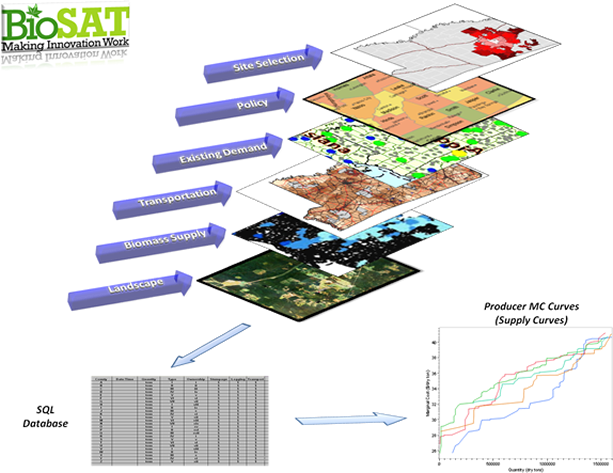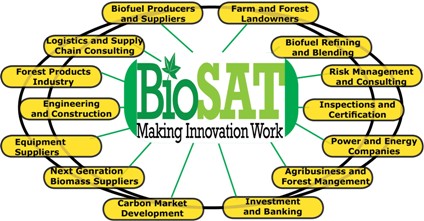BioSAT fuses layers of spatial and economic data together to create a relational database for geographic-based economic cost assessment for woody and agricultural residue biomass collection or processing demand centers. The resolution of the BioSAT model is by five-digit zip-code tabulation area (ZCTA) for the 33 Eastern states. BioSAT’s ability to regularly update base-line market conditions extends the public research value over time. It takes full advantage of today’s information technology systems to simplify the process of acquiring answers to complex questions. The integrated suite of site assessment tools provide a web-based economic decision-making framework for agricultural and forestry biomass that appeals to a broad client base by providing supply chain cost and logistics for cellulosic biomass markets and products.
The problem addressed by this study was to “develop a web-based, economic decision tool with periodic data updates to assist business planners in Kansas for the development of facilities that require cellulosic feedstocks. Spatially explicit GIS data were overlaid to provide geo-referenced marginal cost curves (producer supply curves) of cellulosic feedstocks. The supply chain supporting the BioSAT model has three main cost components: e.g., for wood it is stumpage for standing trees, harvesting, and transportation. For agricultural residues it is nutritional replacement costs and transportation costs. County level estimates were allocated to ‘zip code tabulation areas’ (ZCTAs) based on area proportionality. Forty-four feedstock types and combinations of feedstock types are available.
The goal of this study was to assess the economic availability of cellulosic feedstocks for demand sites in the 33 Eastern United States. The rationale for the research was to provide decision-makers in the cellulosic feedstock-using industries with a better geospatial economic tool that will allow them to assess the economic comparative advantages of cellulosic supply at the state level, sub-regions within the state, and interstate levels.

